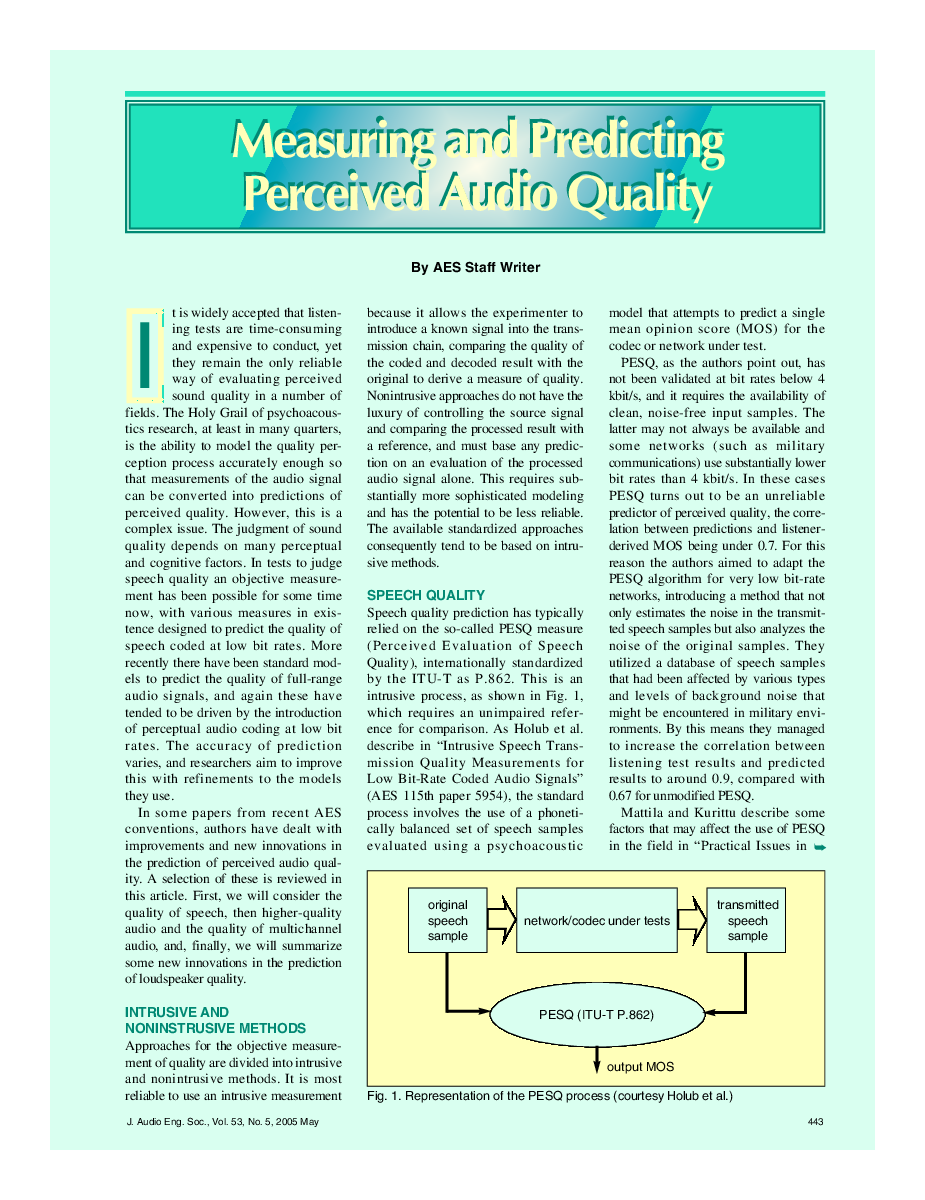Home / Publications / E-library page
You are currently logged in as an
Institutional Subscriber.
If you would like to logout,
please click on the button below.
Home / Publications / E-library page
Only AES members and Institutional Journal Subscribers can download
[Feature Article] It is widely accepted that listening tests are time-consuming and expensive to conduct, yet they remain the only reliable way of evaluating perceived sound quality in a number of fields. The Holy Grail of psychoacoustics research, at least in many quarters, is the ability to model the quality perception process accurately enough so that measurements of the audio signal can be converted into predictions of perceived quality. However, this is a complex issue. The judgment of sound quality depends on many perceptual and cognitive factors. In tests to judge speech quality an objective measurement has been possible for some time now, with various measures in existence designed to predict the quality of speech coded at low bit rates. More recently there have been standard models to predict the quality of full-range audio signals, and again these have tended to be driven by the introduction of perceptual audio coding at low bit rates. The accuracy of prediction varies, and researchers aim to improve this with refinements to the models they use.
Author (s): Staff, AES
Affiliation:
(See document for exact affiliation information.)
Publication Date:
2005-05-06
Import into BibTeX
Permalink: https://aes2.org/publications/elibrary-page/?id=13421
(299KB)
Click to purchase paper as a non-member or login as an AES member. If your company or school subscribes to the E-Library then switch to the institutional version. If you are not an AES member Join the AES. If you need to check your member status, login to the Member Portal.

Staff, AES; 2005; Measuring and Predicting Perceived Audio Quality [PDF]; ; Paper ; Available from: https://aes2.org/publications/elibrary-page/?id=13421
Staff, AES; Measuring and Predicting Perceived Audio Quality [PDF]; ; Paper ; 2005 Available: https://aes2.org/publications/elibrary-page/?id=13421